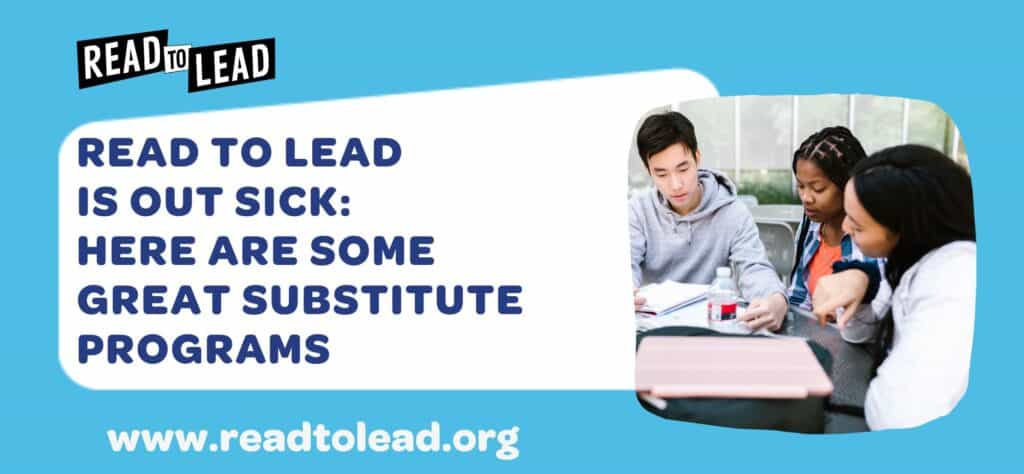
COVID-19 created urgency in the education community to quickly innovate to improve student learning outside of the traditional classroom setting. When schools across the US closed, Classroom, Inc. expanded its efforts to help middle school youth nationwide develop leadership and literacy skills. New relationships with leaders in social impact, including AT&T, have made it possible for Classroom, Inc. to rapidly improve the ways it offers its free learning platform, Read to Lead, and training to support educators and students.
Anne Wintroub is the Director of Social Innovation for AT&T, where she leads a national philanthropic portfolio designed to empower communities. In August 2020, we spoke with Anne about her approach to social innovation, the impact of COVID-19, and how technology and our collaboration can transform education by supporting educators and students in distance learning.
AT&T’s Approach: Education Innovation & Effective Distance Learning
AT&T has been supporting innovative approaches to education for over a decade. Through programs like the AT&T Aspire Accelerator for EdTech startups, investment in pioneering education organizations, program partnerships, and grants and contributions, AT&T is dedicated to ensuring students have access to a high-quality education and opportunities that transform their lives.
While AT&T has long recognized the potential of technology to improve education through innovation, the events of 2020 demonstrated the urgent need for more scalable and equitable approaches to distance learning.
When COVID-19’s impact on education became clear, Anne noted that AT&T “launched a $10M plan to help educators make the transition to teaching through distance learning, help students learn more effectively, and help caregivers get the support they need.” Furthermore, AT&T made an intentional effort to “find new organizations involved in social innovation, like Classroom, Inc., who were playing a profound role before COVID, and help them have the ability to reach and impact thousands of more students.”
Putting Innovation into Practice
COVID-19 made it impossible to ignore that many young people in the U.S., particularly people of color from low-income communities, lack access to the same educational opportunities as their peers. To improve equity in distance learning, Anne notes that many organizations “have found innovative ways to scale their services and platforms to reach more people.”
“The education community is responding in so many different ways, in ways we wouldn’t have predicted beforehand,” reflected Anne. “We know students learn differently, and that learning effectively is not about equality, it’s about equity. We’re seeing organizations like Classroom, Inc. innovating their approach to distance learning so they can serve students in both deeper and more precise ways, ensuring students and families are getting what they need to be successful.”
For Classroom, Inc., this meant creating additional resources that meet the needs of students, teachers, and caregivers. With the support of AT&T, Classroom, Inc. created a Distance Learning Resource hub for teachers making the transition to hybrid and virtual formats, a Family Portal for parents and caregivers who lacked experience engaging in online learning, and an improved version of its most popular learning game, Vital Signs, set in a medical clinic.
Improving Equity in Distance Learning
Creating resources that are easily accessible by anyone anywhere is only part of the solution to enhance educational equity. “We know representation really matters,” said Anne. “We have to show all kids, especially those who have been traditionally left out of leadership opportunities, what possibilities there are. We have to showcase leaders who students can relate to, help them explore the types of opportunities that exist, and make sure they know the people and organizations that so deeply want to see them succeed as leaders.”
Classroom, Inc. intentionally designed Read to Lead, their game-based learning program that empowers students to “be the boss,” with a culturally-responsive lens. The diverse community of characters in the digital learning games provides students from all backgrounds with opportunities to see themselves as readers, leaders, and professionals.
Anne shared that the power of Classroom, Inc.’s approach is in combining the diverse career worlds of Read to Lead with a program that helps students develop the literacy and leadership skills ”to be successful in the jobs of today and the jobs of tomorrow.”
Looking Ahead: Scaling Innovation in Distance Learning
While students will eventually return to their classrooms, the need for innovative, and equitable distance learning opportunities will remain. As the role of technology in education continues to expand, Anne believes that students must be at the center of designing EdTech. She challenges organizations to “see students as co-founders and truly value their voice” and to “continue developing innovative, human-based approaches to teaching and learning.”
To have a lasting impact, innovation must be amplified through collaboration where different organizations can play on each other’s strengths. “[At AT&T],” Anne said, “collaborations can take many different forms. It’s more than just providing financial resources. We strive to share the best of AT&T’s resources from insights, to human capital, to technology, so that impact becomes more of a collective experience.”
About Read to Lead
Read to Lead uses the power of game-based learning to empower middle school students to build literacy, life, and career skills. Teachers can sign up for a free account to get started!


